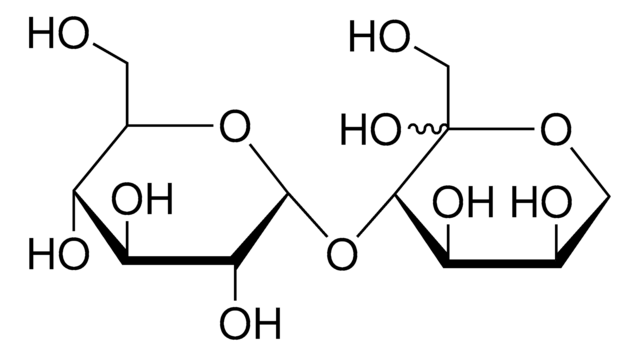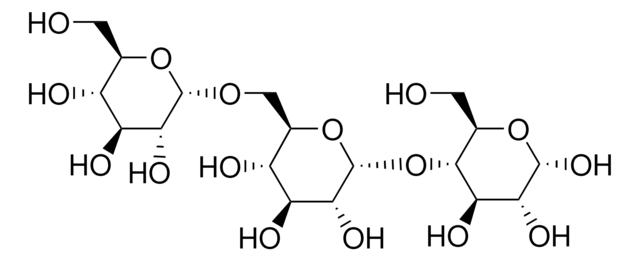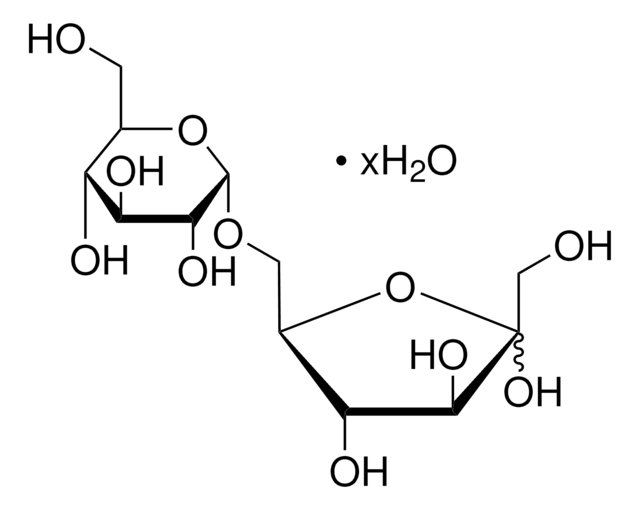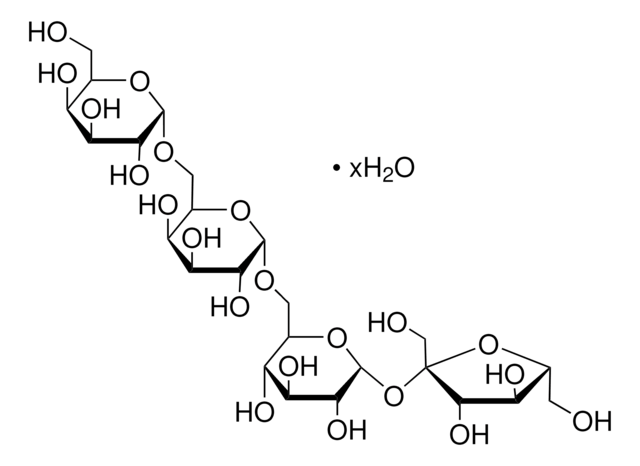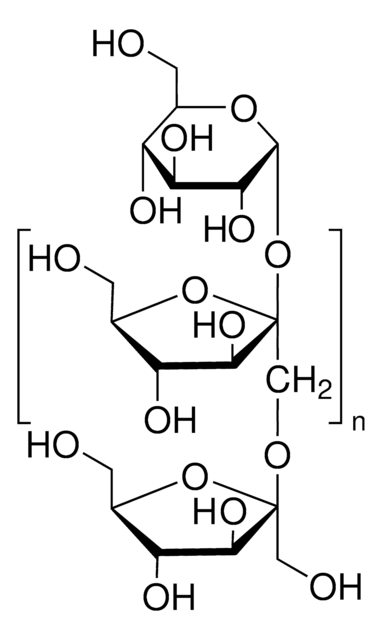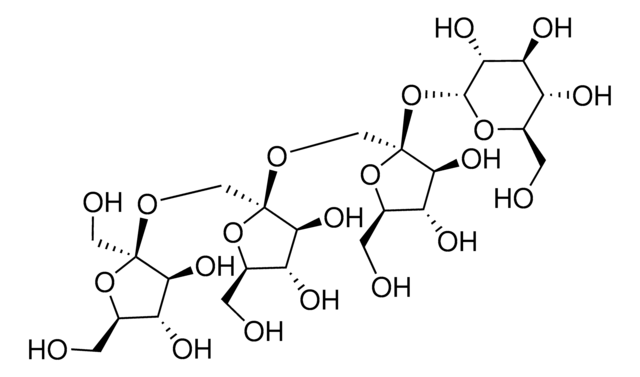Kluczowe dokumenty
E1895
Erlose
≥94% (HPLC)
Synonim(y):
α-D-Glc-(1→4)-α-D-Glc-(1→2)-β-D-Fru, α-Maltosyl β-fructofuranoside
About This Item
Polecane produkty
pochodzenie biologiczne
plant
Poziom jakości
Próba
≥94% (HPLC)
Formularz
powder
aktywność optyczna
[α]20/D 108.5 to 112.0 °, c = 0.84% (w/v) in water
warunki przechowywania
desiccated
zanieczyszczenia
≤12.5% water (Karl Fischer)
kolor
white to off-white
rozpuszczalność
H2O: 50 mg/mL, clear to slightly hazy, colorless to faintly yellow
temp. przechowywania
−20°C
ciąg SMILES
OC[C@H]1O[C@H](O[C@H]2[C@H](O)[C@@H](O)[C@H](O[C@@H]2CO)O[C@]3(CO)O[C@H](CO)[C@@H](O)[C@@H]3O)[C@H](O)[C@@H](O)[C@@H]1O
InChI
1S/C18H32O16/c19-1-5-8(23)10(25)12(27)16(30-5)32-14-7(3-21)31-17(13(28)11(14)26)34-18(4-22)15(29)9(24)6(2-20)33-18/h5-17,19-29H,1-4H2/t5-,6-,7-,8-,9-,10+,11-,12-,13-,14-,15+,16-,17-,18+/m1/s1
Klucz InChI
FVVCFHXLWDDRHG-KKNDGLDKSA-N
Zastosowanie
Przestroga
Inne uwagi
Kod klasy składowania
11 - Combustible Solids
Klasa zagrożenia wodnego (WGK)
WGK 3
Temperatura zapłonu (°F)
Not applicable
Temperatura zapłonu (°C)
Not applicable
Środki ochrony indywidualnej
Eyeshields, Gloves, type N95 (US)
Wybierz jedną z najnowszych wersji:
Masz już ten produkt?
Dokumenty związane z niedawno zakupionymi produktami zostały zamieszczone w Bibliotece dokumentów.
Klienci oglądali również te produkty
Nasz zespół naukowców ma doświadczenie we wszystkich obszarach badań, w tym w naukach przyrodniczych, materiałoznawstwie, syntezie chemicznej, chromatografii, analityce i wielu innych dziedzinach.
Skontaktuj się z zespołem ds. pomocy technicznej